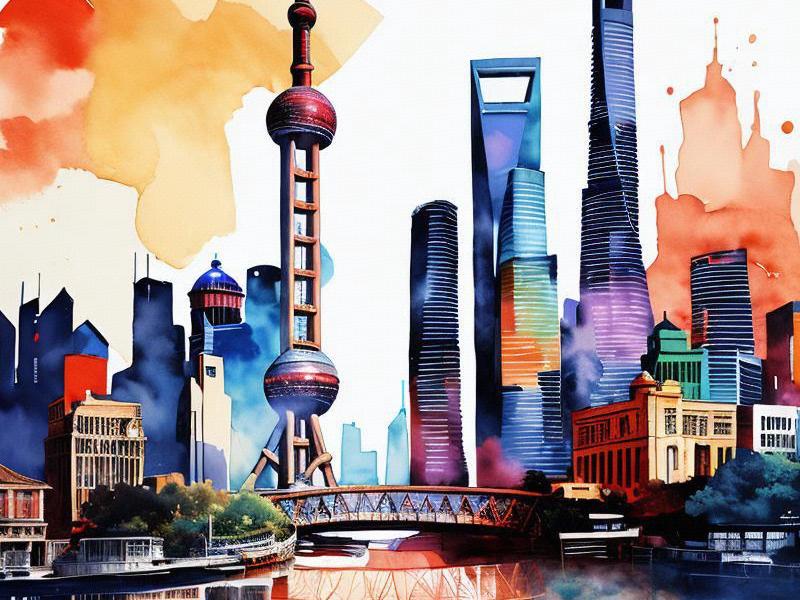This article delves into the intricate tapestry of Shanghai's cultural integration, exploring how this vibrant metropolis harmoniously blends its rich historical heritage with the dynamic forces of modernity. It examines the city's unique cultural identity, the challenges it faces in preserving its traditions while embracing progress, and the innovative strategies employed to achieve a balanced cultural evolution.

Shanghai, the bustling heart of China, stands as a testament to the nation's rapid urbanization and modernization. Yet, amidst the towering skyscrapers and neon-lit streets, the city has managed to preserve its rich cultural heritage, creating a unique fusion of tradition and modernity. This cultural integration is not merely a superficial amalgamation but a profound synthesis that defines Shanghai's identity and sets it apart on the global stage.
The city's cultural tapestry is woven with threads of history, reflecting its colonial past, indigenous traditions, and the influx of diverse cultures over the centuries. The Bund, with its historic architecture, serves as a poignant reminder of Shanghai's colonial era, while the nearby Yu Garden and the surrounding Old City area showcase the elegance of traditional Chinese architecture. These landmarks coexist with the futuristic skyline of Pudong, home to the iconic Oriental Pearl Tower and the Jin Mao Tower, symbolizing Shanghai's meteoric rise in the modern world.
One of the key aspects of Shanghai's cultural integration is its ability to embrace diversity. As a global financial hub, the city attracts people from all corners of the world, each bringing their own cultural influences. This melting pot of cultures is evident in the city's vibrant food scene, where one can savor everything from Sichuan hotpot to French haute cuisine, and in its art and music scenes, which feature a blend of traditional Chinese and international styles. The Shanghai International Film Festival, for instance, has become a prestigious event that showcases films from around the globe, fostering cross-cultural dialogue and understanding.
However, the process of cultural integration is not without its challenges. The rapid pace of urban development has posed significant threats to Shanghai's historical and cultural landmarks. The relentless march of modernity often clashes with the need to preserve the city's unique character. To address this, the local government has implemented various measures to protect and restore its cultural heritage.
上海贵人论坛
The Shanghai Municipal Government has established numerous cultural preservation zones, such as the Luwan District and the former French Concession, where strict regulations are enforced to maintain the architectural integrity of the area. These zones serve as living museums, allowing residents and visitors to experience the city's rich history and cultural diversity. Additionally, the government has launched initiatives to promote traditional arts and crafts, ensuring that these skills are passed down to future generations.
In recent years, Shanghai has also embraced digital technology to enhance its cultural integration efforts. The city has invested heavily in smart city initiatives, leveraging technology to preserve and promote its cultural heritage. For example, the Shanghai Digital Museum allows visitors to explore the city's history through interactive exhibits and virtual reality experiences. Similarly, the Shanghai Cultural and Creative Industry Park utilizes digital platforms to showcase local artists and artisans, providing them with a global audience.
The integration of culture and technology is also evident in the city's approach to urban planning. Shanghai has developed smart cultural spaces that combine traditional architecture with modern amenities, creating environments that are both functional and culturally enriching. The Xintiandi area, for instance, is a prime example of this harmonious blend. This historic district has been transformed into a vibrant cultural and commercial hub, featuring restored Shikumen buildings, trendy cafes, and art galleries. Xintiandi serves as a model for how Shanghai can balance its cultural heritage with the demands of modern urban life.
爱上海419论坛
Education plays a crucial role in Shanghai's cultural integration efforts. The city has established numerous cultural institutions and educational programs aimed at fostering a deeper understanding and appreciation of its cultural heritage. The Shanghai Museum, one of the largest and most prestigious museums in China, offers a wide range of exhibitions and educational programs that explore the city's history and culture. Similarly, the Shanghai Conservatory of Music and the Shanghai Theatre Academy provide students with opportunities to study traditional Chinese arts and contemporary performance.
The integration of culture and education is also evident in the city's approach to language preservation. Shanghai has implemented various initiatives to promote the use of the Shanghainese dialect, a unique form of Wu Chinese that is an integral part of the city's cultural identity. Language preservation programs, such as the Shanghainese Language and Culture Festival, aim to keep this dialect alive among younger generations.
Despite its many achievements, Shanghai's cultural integration journey is far from complete. The city continues to face challenges in balancing its rapid urban development with the preservation of its cultural heritage. As Shanghai evolves into a global leader in various fields, it must remain vigilant in safeguarding its unique cultural identity.
上海娱乐联盟
One of the emerging challenges is the impact of globalization on local cultures. The influx of international brands and cultural influences can sometimes overshadow the city's own traditions. To address this, Shanghai has adopted a proactive approach, promoting its cultural heritage through international cultural exchanges and collaborations. The city has established partnerships with numerous international organizations and cultural institutions, fostering mutual understanding and respect.
In conclusion, Shanghai's cultural integration is a dynamic and ongoing process that reflects the city's unique position as a bridge between tradition and modernity. By embracing diversity, leveraging technology, and investing in education, Shanghai has successfully created a harmonious blend of its rich historical heritage and the dynamic forces of modernity. As the city continues to evolve, it remains committed to preserving its cultural identity and sharing its unique story with the world.